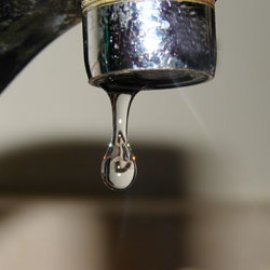Planning with Water, Part 4
-
English
-
ListenPause
I’m Peter Neill, Director of the World Ocean Observatory. Our multi-part World Ocean Radio series on planning with water continues this week with what is called by hydraulic engineers as “non-revenue water,” that is what has been produced by collection but cannot be valued because of the utility lost to leakage and other forms of waste. If you think about your own water usage, you can begin to understand what I mean. Whether or not you draw your water from a well or a municipal system, picture in your mind how that water flows through your home, what it provides, and where might be the places or behaviors where the value of that water is lost. Showers, toilet flushes, food preparation, car washes, lawn and garden irrigation – these represent the major functions of water in the home. For how long do you or your children shower? How many times a day do you flush the toilets? Do you leave the water on when you brush your teeth or wash your dishes? These are all typical points where each of us loses the value of water down the drain, rarely recycled, mostly wasted. If you take this one phenomenon, add to it theft of water or inaccurate metering, or free use for fire-fighting and other civic necessities, the Danish Hydraulic Institute totals for US$14 billion lost by water users, managers, and utilities each year due to non-revenue water. To understand water use, the Hydraulic Institute conducts water audits, identifying and analyzing the various stages along the distribution chain. The process examines water supplies, owned and imported, to calculate total system input. Against this is measured water supplied and exported, consumption authorized and unauthorized, billed and unbilled consumption, apparent and real losses to construct a balance sheet that reveals revenue water minus non-revenue water showing either surplus or deficit derived from the existing system. These analyses can reveal weaknesses and inefficiencies along the way, and can also reveal strategies for repair, modification, and increased economies to make the system better. Localized pressure tests and flow meters can point to very specific, reparable problems, reduce leaks and blow-outs, and also reduce maintenance costs and failure rates, diverting funds to up-grades and replacements. Similar tests can discover areas of deteriorated pipe, broken connections, malfunctioning valves and pumps, and failed or tampered meters. In its entirety, the water audit gives a real-time picture of a system that may have been constructed decades previous, sporadically maintained or improved, and in need of a major overhaul or modernization. Finally, this information can provide the data required to make management and financial decisions, accurately predict and allocate budgets over time, and provide a schematic for capital improvement, investment in new technologies, a model for a better system with far greater efficiency and return, and dramatically reduced waste of the most valuable commodity on earth. All this, from a reasonable evaluation of usage in the home or along the path of distribution. In last week’s World Ocean Radio, I described a much larger audit of the 3 million square km area of the Nile River basin. Beyond scale, what actually is the difference between that endeavor and what we might do at home, a key place where a change in behavior results in shift in the data set, representing both baseline information but also measure of resultant improvements? What you do each day with your water is part of an enormous hydraulic reality by which precious water moves through a global natural, financial, and political system of distribution and re-distribution, through cycles and conveyors and up-welling’s that too often corrupt or poison the water consumed. Removing any water from that system, even a single drop, denigrates it and denies it for the future. If we can understand the peculiarities of our plumbing and habits at home, then we can fix them. The same holds true for a municipal water system. And the same holds true for a watershed. And the same holds true for the ocean, the greatest water system on earth. If we can understand how our patterns of water use and waste are connected, perhaps now we can look to solutions evident and possible through planning with water. We will discuss these issues, and more, in future editions of World Ocean Radio.
In this episode of World Ocean Radio host Peter Neill continues discussion of the global water crisis. This week he talks about water audits conducted by the Danish Hydraulic Institute and invites listeners to consider their own water use at home, asking that we consider how what we do each day plays into the larger hydraulic reality which affects us all. This episode is part of an ongoing series that looks toward building a new value premise and societal change around water as the most valuable commodity on earth, essential to our future survival.
About World Ocean Radio:
Peter Neill, Director of the World Ocean Observatory and host of World Ocean Radio, provides coverage of a broad spectrum of ocean issues from science and education to advocacy and exemplary projects. World Ocean Radio, a project of the World Ocean Observatory, is a weekly series of five-minute audio essays available for syndicated use at no cost by college and community radio stations worldwide. A selection of episodes is now available in Portuguese, Spanish, French, and Swahili. In 2015 we will add Mandarin to our roster of global languages, enabling us to reach 75% of the world's population. For more information, visit WorldOceanObservatory.org/world-ocean-radio-global.
Resources from this episode:
< Nile Basin Initiative
< Danish Hydraulic Institute
< Home Water Works: Water Usage Calculator
"Planning with Water" Series
< Part I
< Part II
< Part III
- Login to post comments



